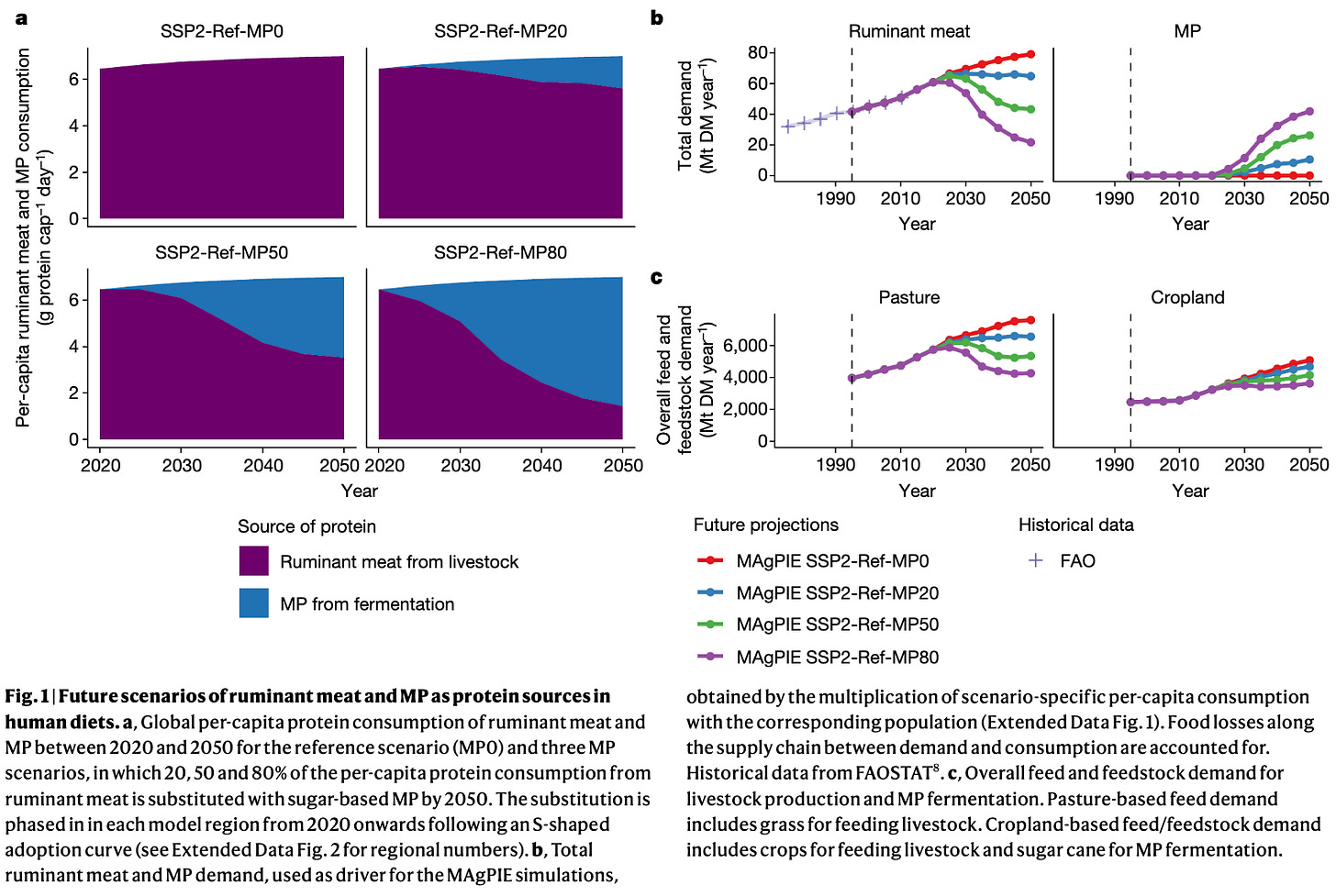Precision Fermentation, Sustainable Protein, Alternative Foods
Making whey, egg whites, chicken and other foods in the lab
Writing is mine. Research using Telborg, ChatGPT1 & Perplexity.
Microbial fermentation has been used to produce foods and beverages for many decades. Cheeses, beer and various food additives like lactic acid, citric acid, many vitamins. All of these have been made using fungi & bacteria in carefully controlled fermentation environments. Usually the desired product would be something the bacteria or fungus made as a by-product of their metabolic activity, not something they wanted to use, and so it would be secreted out of the cell, making it possible to collect and purify.2
Precision fermentation adds genetic engineering to this process. The genome of a bacterium or fungus is modified to produce a specific desired molecule in large amounts. The now famous Impossible Foods burgers get their meat-like flavour from heme protein made through precision fermentation.
Initially, whey and casein were made this way, because of their wide use in the food industry as additives.
There are now several startups producing different proteins, and other products through precision fermentation:
Whey protein by Perfect Day
Egg-white proteins - EVERY Company, VTT (Onega Bio), Clara Foods
Heme protein - Impossible Foods
Cheese protein - Formo
Collagen & Gelatin for cosmetics - Geltor
Honey - MeliBio
β-lactoglobulin and lactoferrin - Vivici
Enzymes like pepsin, chymosin
Alternative milk fats and Cocoa butter
Flavour compounds like vanillin
Pigments like astaxanthin
Palm oil from yeast
Some are also using AI to improve the process
Deeplife, a leader in AI-driven cellular digital twin technology, and Gourmey, a Paris-based cultivated meat pioneer, have partnered to develop the world’s first avian digital twin — a virtual replica of poultry cells engineered to optimize growth conditions, nutrient density, and flavor expression in cultivated meat. Gourmey
Could it really help?
Lewis Bollard, Program Director for Farm Animal Welfare at Open Philanthropy, says “The end of factory farming is far from inevitable. Every year we’re factory farming about 2% more animals globally.”
Livestock farming is responsible not just for emissions, but deforestation as well. Research published in Nature in 2021 found:
Our model projections show that substituting 20% of per-capita ruminant meat consumption with MP globally by 2050 (on a protein basis) offsets future increases in global pasture area, cutting annual deforestation and related CO2 emissions roughly in half, while also lowering methane emissions.
They look at the demand for pasture and cropland under different scenarios where ruminant meat is replaced by microbial protein by 20%, 50% and 80% respectively.

The primary blocker to scaling is the cost of the final product. As Lewis Bollard explains, chickens are extremely good at converting grain into protein - you essentially get protein at 2x the price of grain plus some extra costs.
Gourmey estimates it can reach a production cost of US$3.43 per pound (€7 per kilogram) at a 5000-liter bioreactor system. Conventional chicken costs about US$2.08 per pound in the USA, broiler is about US$1.27 per pound.
Recent developments
(July 31) The Bezos Centre for Sustainable Protein at NUS Singapore announced US$3 million in grants over the next 5 years to support early stage startups working on sustainable protein
Seven US states banned the sale of cultivated meat in 2024 & 2025
EU states have not banned alternative meat yet, but approval is required under the Novel Foods regulation to sell cultivated meat in the EU. In 2024, French start-up Gourmey filed applications with the United States Food and Drug Administration (FDA), the Singapore Food Agency (SFA), the Food Standards Agency (FSA) in the United Kingdom, the Swiss Federal Food Safety and Veterinary Office (FSVO), and the European Commission (EC) and European Food Safety Authority (EFSA). It received approval from the UK FSA in July 2025.3
Deep research report from ChatGPT here
Recent FAO report on Precision Fermentation captures the status of regulatory frameworks on Precision Fermentation in different countries. See page 27-28.

